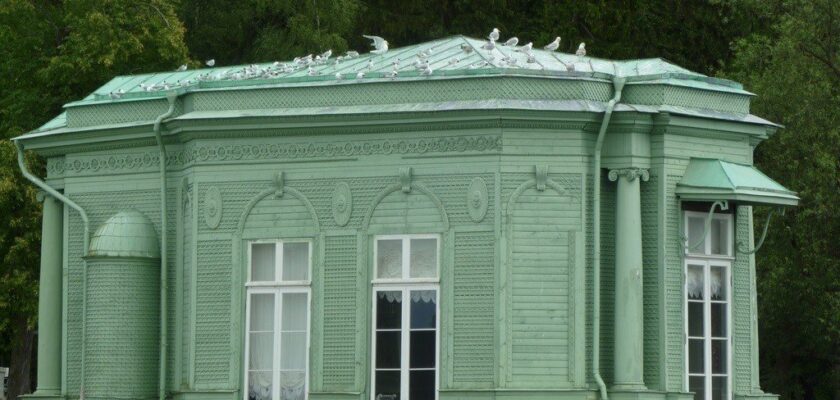Venus Pavilion (Trelliage)
The Venus Pavilion is a picturesque architectural monument and one of the most romantic corners of the Gatchina Palace Park. The pavilion was built in 1792-1793 and nowadays it is part of the Gatchina State Museum-Reserve. It stands on the triangular Love Island, separated from the land by artificial canals. The second name of the Venus Pavilion – Trelliage – arose because of the characteristic decoration of the walls, the pattern of which resembles the trellis garden pavilions that were in vogue in the 18th century.
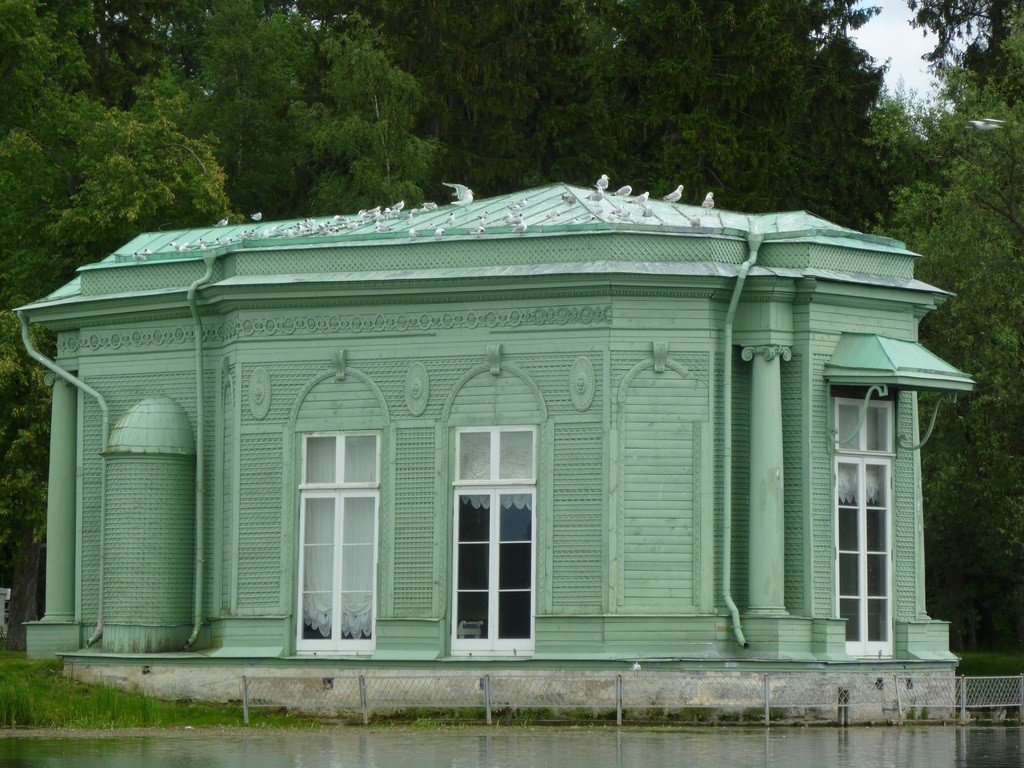
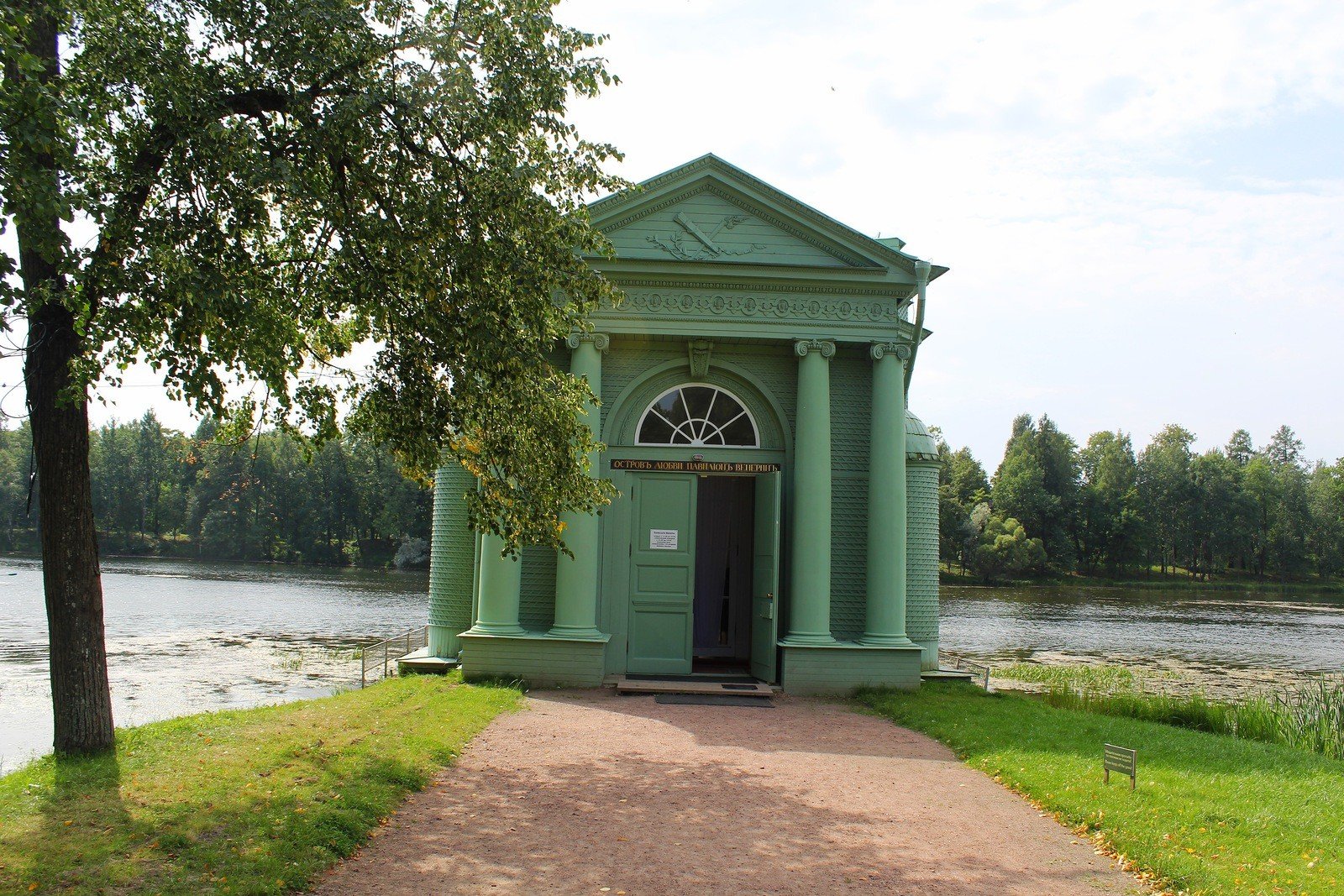
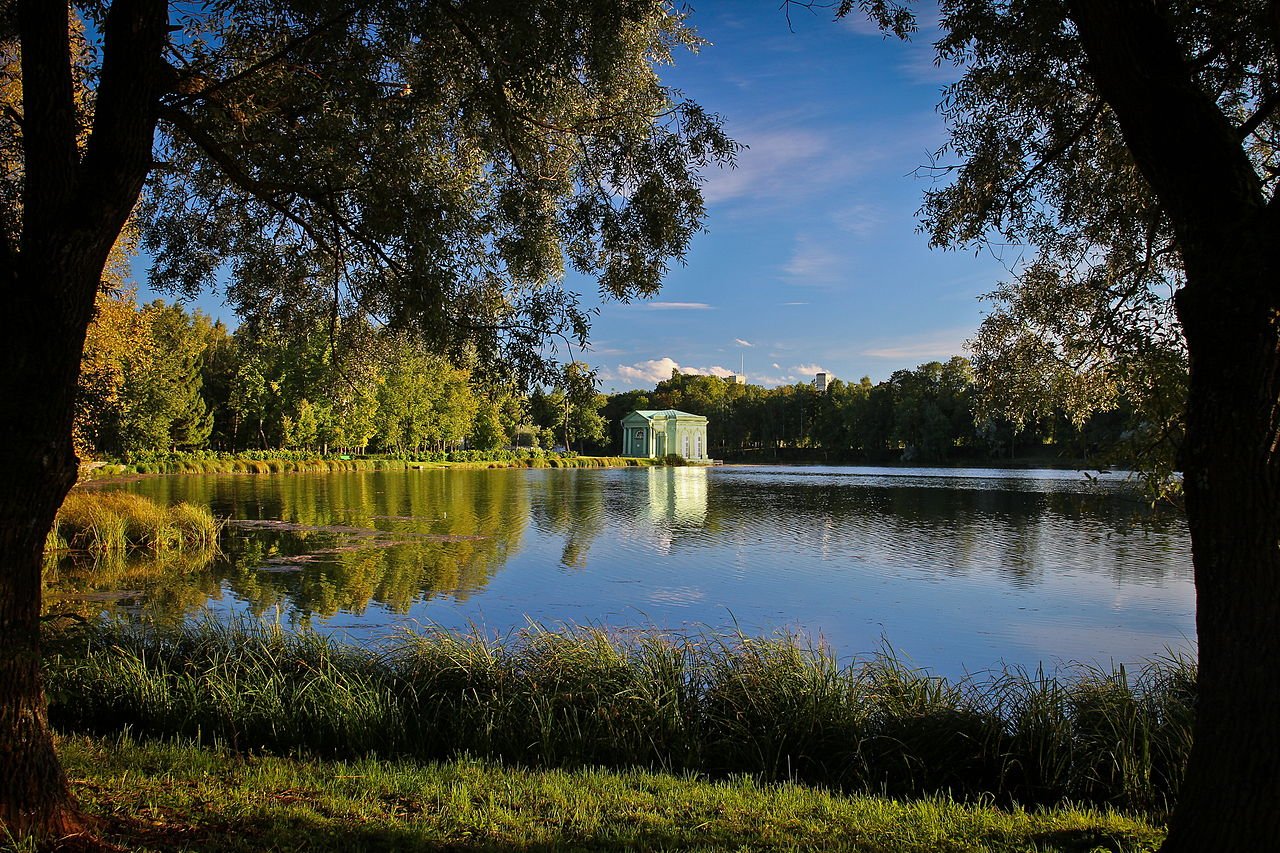
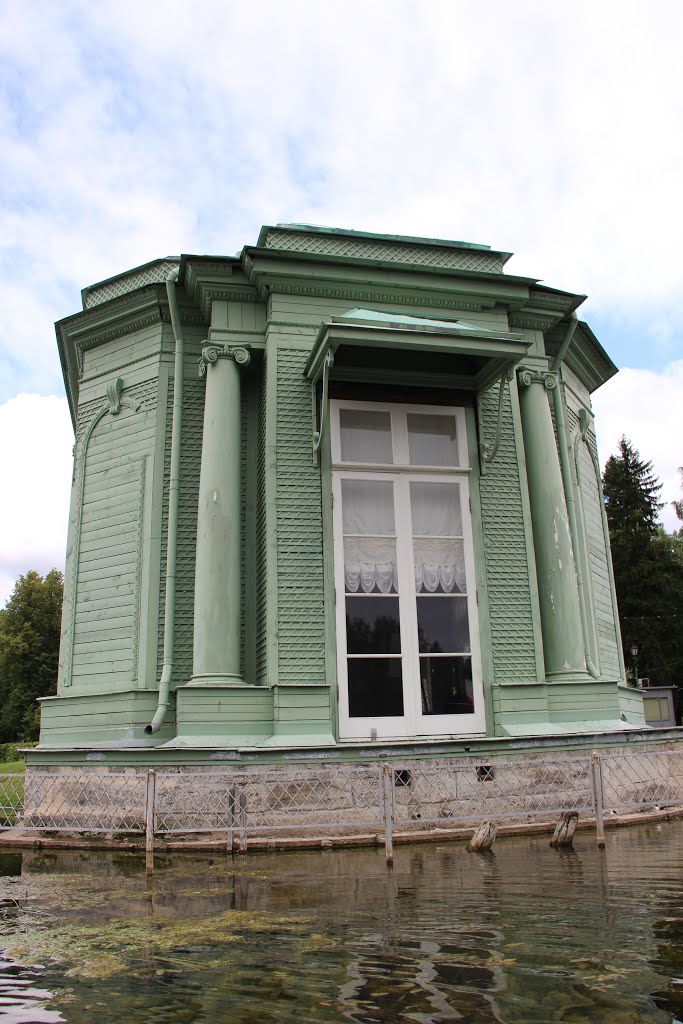
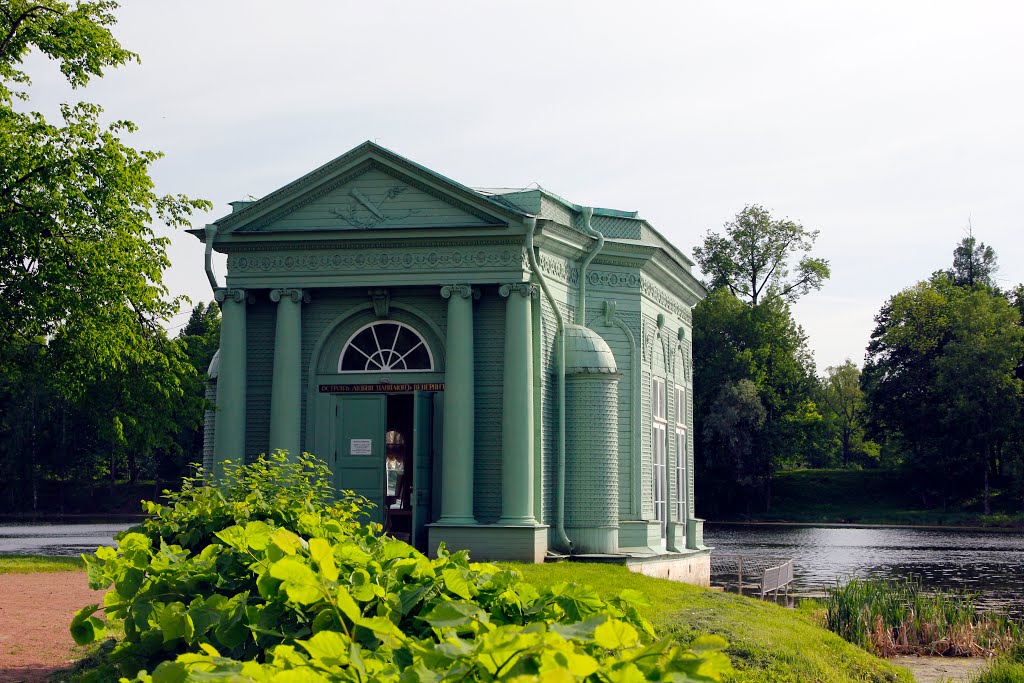
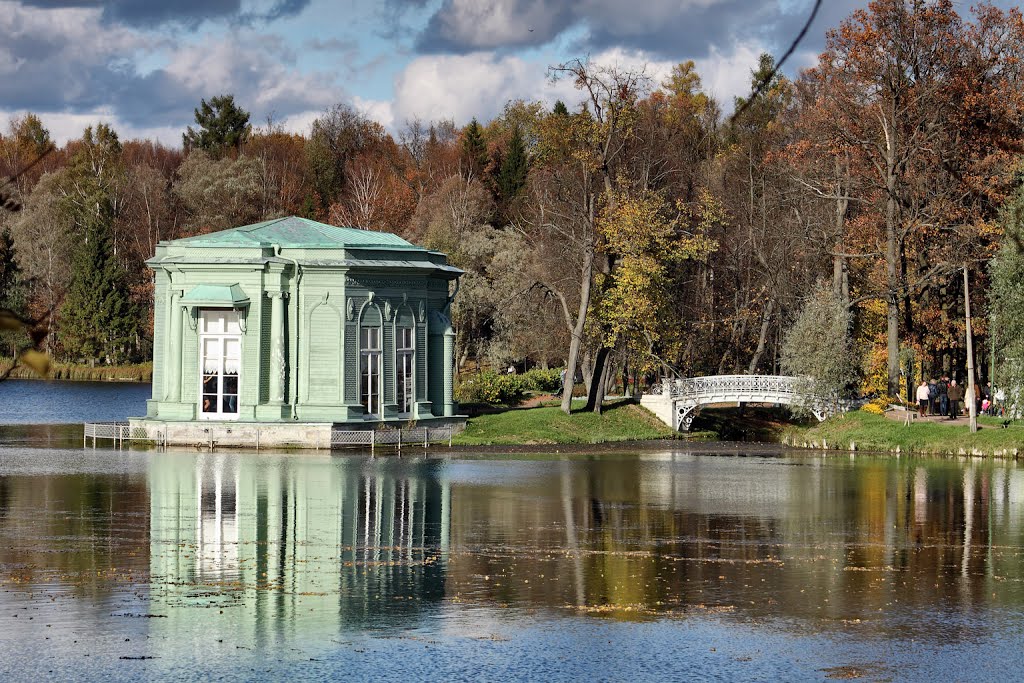
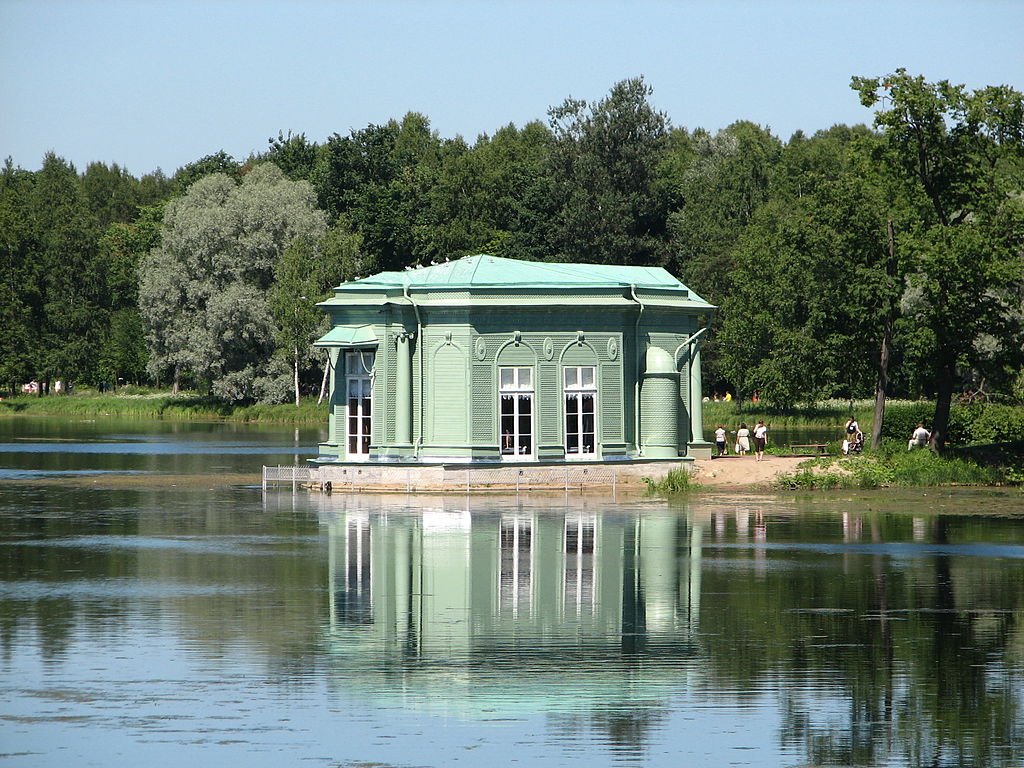
Video: Light show at the Venus Pavilion
% ContentsHighlights
The Venus Pavilion is easily recognizable by its distinctive cut corners and semicircular niches. The one-story structure is light green in color and consists of a main elongated hall and a small lobby. Its facade is decorated with a classical portico with Ionic columns and a strict triangular pediment. Inside the pediment there are relief images of Cupid’s symbols – a quiver filled with arrows, a burning torch, roses and branches. Above the door is the inscription “Love Island. Venus Pavilion.”
>The main hall measures 10 by 8 meters and has five window-doors that face the White Lake. Inside, mirrors are installed on the walls, and the partitions are decorated with paintings in the grisaille style. An elegant plafond of 25 m² is painted on the theme “The Triumph of Venus”. Opposite the glass doors are four marble interior fountains. Their gurgling, mirror reflections, elegant paintings and plenty of light create an atmosphere of romance inside the pavilion, which is so appreciated by visitors to the Palace Park.
.History of the Venus Pavilion
The idea to build the Venus Pavilion was born by the future Emperor Paul I after he visited France in the 1780s. Visiting the Château de Chantilly, he was impressed by the picturesque pavilion and wanted to build one in his own residence near St. Petersburg.
Later, when the court architect of Paul I Vincenzo Brenna designed the Gatchina pavilion, he used an image of the Chantilly building. True, the experienced architect did not completely copy the French pavilion. He only embodied the general idea, having built the building with one part on the shore and the other part on stilts over the lake. Guests came to the Venus Pavilion by boat and climbed the steps to the halls. The first of these, the lobby, was oval in shape, while the main hall was rectangular.
During the battles of the Great Patriotic War, the one-story building was severely damaged. The walls and columns were mutilated by artillery fire, and the paintings, the picturesque plafond and the set floor were damaged.
The restoration of the ancient building took place in the mid-1960s. The wall frescoes and the painting of the plafond were done by the artist Alexander Mikhailovich Lyubimov. In the 1970s, the interiors of the Venus Pavilion were reconstructed using the project of architect and restorer Alexander Alexandrovich Kedrinsky, and the last restoration of the architectural monument was carried out in 2007-2010.
.Information for visitors
The Venus Pavilion is beautifully restored and accessible to tourists. It is only open in the summertime, from May through October from 11.00 am to 7.00 pm. Please note that the pavilion is usually closed on rainy days. Entrance here is paid. Ticket for adults costs 70 rubles, for schoolchildren, students and people over 65 years – 30 rubles.
.How to get there
The Venus Pavilion is located on the shore of the White Lake, at the tip of Love Island, in Gatchina’s Palace Park. In 6-10 minutes to the architectural monument is not difficult to walk from the railway stations “Gatchina Baltiyskaya” or “Tatyanino”, where electric trains from the Baltic station of St. Petersburg. From the metro station “Moskovskaya” to Gatchina there are buses No. 431 and marshrutkas No. 18, 18A.
.